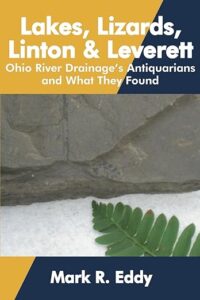
The Grave Creek Mound is a well-known remnant of West Virginia’s Native American prehistory. However, most people interested in prehistory may not realize that fossil specimens from the Northern Panhandle and Upper Ohio River Valley laid the foundation for studying America’s Deep Antiquity. Many of the 19th-century scientists were employed by the emerging fossil fuel industries when they made their discoveries of the Permian animals and plants. While the Valley’s geology kept the scientists returning, they made other discoveries related to the Ice Age. For example, they concluded that the Ohio River had been an evolving geographical feature. It was covered by an ocean, was a swamp, then a series of independent lakes, then a massive lake until a mysterious, catastrophic event caused a sudden drainage, which created the “unified” river we know today.
As we move forward in time, we find that the Upper Ohio Valley has been forgotten about, mischaracterized, and we do not have a solid understanding of the Valley’s Native inhabitants. Modern researchers write about what was found in each state bordering the Ohio River at the expense of a more holistic view of both shores of the river. Did the Ancients observe such a boundary? The second half of the book examines what we do not know about the Valley’s prehistoric cultures and what we will try to answer over this series.
Mr. Eddy includes many photographs of Permian and Pleistocene specimens, curated artifacts and panoramas of where the scientists developed their theories of the evolution of the Ohio Valley.
